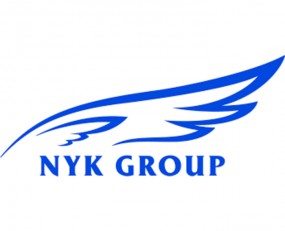
Japanese shipping and logistics companies, NYK Lines, Mitsui OSK Lines (MOL) and ‘K’ Lines have announced that they are to merge their container shipping businesses.
In a short statement the CEOs of the three companies commented that “shipping industry has struggled in recent years due to a decline in the container growth rate and the rapid influx of newly built vessels […] which has destabilized the industry and has created an environment that is adverse to container line profitability. In order to combat these factors, industry participants have sought to gain scale through mergers and acquisitions and consequently the structure of the industry is changing through consolidation. Under these circumstances, three companies have now decided to integrate their respective container shipping on an equal footing to ensure future stable, efficient and competitive business operations.”
Later in a press conference in Tokyo, CEO of NYK, Tadaaki Naito, put it more bluntly, “the aim of becoming one this time is so none of us become zero”.
The three companies have created a joint venture in which NYK will hold 38% of the equity, Kawasaki Kisen Kaisha (K Lines) 31% and Mitsui OSK Lines 31%. This joint venture will include the three companies port terminal operations and holdings.
According to Naito, the new company will hold around 7% of the container shipping market. Based on NYK’s own figures as of January 1st, NYK had a fleet of 483,747 TEU, K Line 407,515 TEU and Mitsui OSK, 574,667 TEU. Even combined this will not challenge the leaders, such as Maersk and MSC, who hold double digit percentages of the market share, however it will enable the Japanese players to remain mid-table, alongside the like of Hapag-Lloyd or COSCO.
The pressure that has led to this move have been obvious for years. For example, Mitsui OSK revised down its results for the year, predicting a loss for the half-year and the full year, whilst NYK has extensively re-orientated its business away from its previous domination by container shipping and towards areas such as liquefied natural gas transport and contract logistics. Having three mid-sized shipping companies operating out of Japan was, as the management of the companies have stated, no-longer viable in today’s market.
Source: Transport Intelligence, October 31, 2016
Author: Thomas Cullen